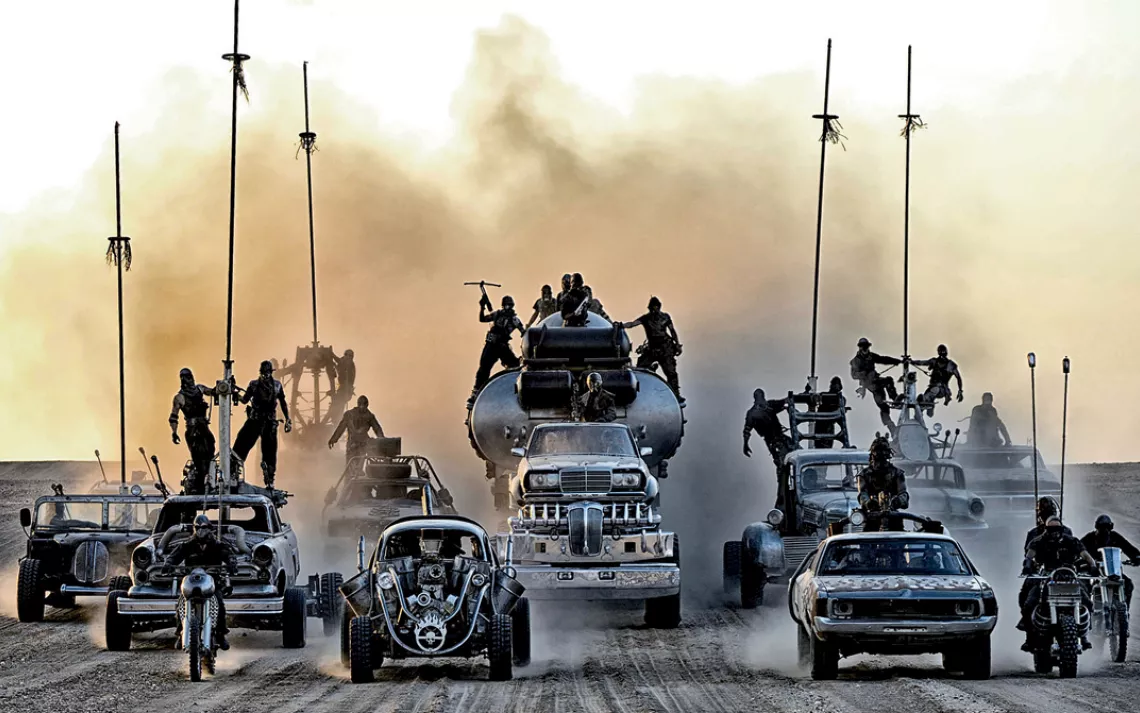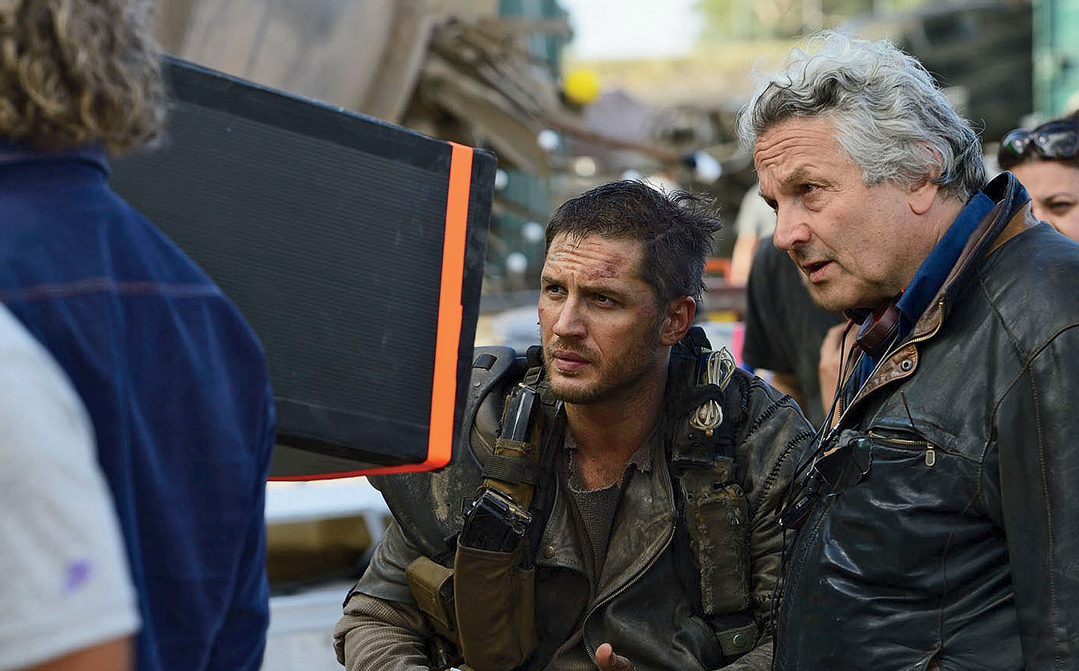Fury Road: All Your Darkest Environmental Nightmares Come True
Is there an environmental message at the core of George Miller's new high-octane "Mad Max" film?

In the environmentally degraded future portrayed in the film Mad Max: Fury Road, oil is precious, cars are worshipped as religious artifacts, and "half-life war boys" drive around the desert in synchronized style. | Photo by Jasin Boland/Courtesy of Warner Bros. Pictures
IMAGINE WHAT THE WORLD WOULD look like 50 years from now if every ominous environmental trend of today were to play out: climate change, deforestation, water shortages—plus a couple of thermonuclear strikes for good measure. That was the mandate from Australian filmmaker George Miller to his crew on Mad Max: Fury Road, a full-throttle action movie (due to hit theaters May 15) set in a postapocalyptic desert where lunatics with outrageous vehicles fight over water and oil. "Everybody on the set had to start from the same ground rules," Miller said, "which was that all the worst-case scenarios you read in the news have come to pass."

George Miller directs on the set of Mad Max: Fury Road. | Photo by Jasin Boland/Courtesy of Warner Bros. Pictures
Miller's writing and directing credits couldn't be more diverse, from Fury Road's dark and violent Mad Max predecessors to such uplifting family films as Babe and Happy Feet. But it wasn't until the 2011 release of Happy Feet Two, in which global warming threatens cartoon penguins, that Miller drew ire from right-wing pundits and praise from environmentalists. "Tucked inside this nominally feel-good jukebox musical...is a piercingly sad story about the devastation being visited on the natural world," Manohla Dargis wrote of the film in the New York Times.
Does his new Mad Max film have a similar environmental theme? We reached Miller at home in Sydney to see what he had in mind.
Is there an environmental message hidden behind all the explosions and high-speed chase scenes, or were you just out to entertain?
There is an environmental story, but it's in the subtext. The sad thing is that it doesn't really require much exposition for the audience to buy a degraded world, because we already see evidence of it happening all around us.
Based on the trailer, it appears that you've taken that degradation to an extreme here. For instance, the dust storm looks cataclysmic.
Yeah, [in the film] we call them toxic storms. But even that's not too far from the truth. In Australia, when the conditions are right, you get these great dust storms moving across the landscape and often into the cities. In the middle of the day, the sun will be eclipsed by this mass of red dust. I've been in a couple of them; most Australians have. We just take it further in the film. But the movie's not trying to chronicle the world's environmental collapse. It's saying, "Here is the world that remains." It's spare and elemental. And within that context, you play out a morality tale.
Despite the environmental subtext, there's also a kind of fetishizing of car culture. People who drive monster trucks are going to love this movie. Have you considered that disconnect?
Our characters don't just fetishize cars; they worship them as religious artifacts. There's a group of warriors that we call "half-life war boys" who are doomed to die young, and they worship cars because the machines endure when they know they themselves will not. Steering wheels become religious symbols. One character has scarified a whole engine block on his body. They want to become the machines.
Is that meant as a kind of commentary?
Well, we've taken the fetishizing of cars to a religious point, which is definitely a commentary on car culture. The thing is, I love silent films, which were very much driven by chase and action. I see them as pure cinema. So that's my conflict: I really do like action movies, even though I worry enormously about the degradation of the planet.
When you were shooting, did you ever step back and think, "This movie, with all of its explosions and car chases, has a big carbon footprint"?
Compared to, say, passenger jets flying across the globe, the carbon footprint of this film isn't all that significant, because it's a relatively brief event. All those cars stacked up on freeways around the world—that's constant. When you film a big explosion, you don't do two takes; it's a one-off event that at most lasts 15 seconds. I remember with Happy Feet, there were people arguing the hypocrisy, because we were using electricity to run our computers to make the animation. I mean, OK, if you wanted to be a purist about it, then you'd do nothing.
You once said that movies like An Inconvenient Truth do little to change attitudes, because if you really want to motivate people, you have to touch their hearts and move them emotionally. Not just give facts.
There's an interplay between the two. When you give someone a purely logical argument, you're only involving the intellect. Which is fine in itself, but it's not a story. A story touches the entire human being. It works with the viscera, with the intellect, and with the spirit. If a story is any good, it will follow you out of the theater. It will come back to you, and you will reflect on it. That's my greatest hope as a storyteller, really. In the end, there's no ideological agenda here. I'm just telling a story in response to the way that I perceive the world.

Make every day an Earth Day
Get articles like this one sent directly to your inbox.
With this action you affirm you want to receive Sierra Club communications and may vote on policy designated by the Sierra Club Board.
What's your environmental vice?
I love a long, hot shower. They're always too long. The only way I justify it is that that's where I do some of my best thinking. It's where you disassociate yourself and you go back into some sort of womb and your mind free-associates. Easily my best creative solutions have come in the shower.
---
Watch the trailer for Mad Max: Fury Road here:
 The Magazine of The Sierra Club
The Magazine of The Sierra Club



